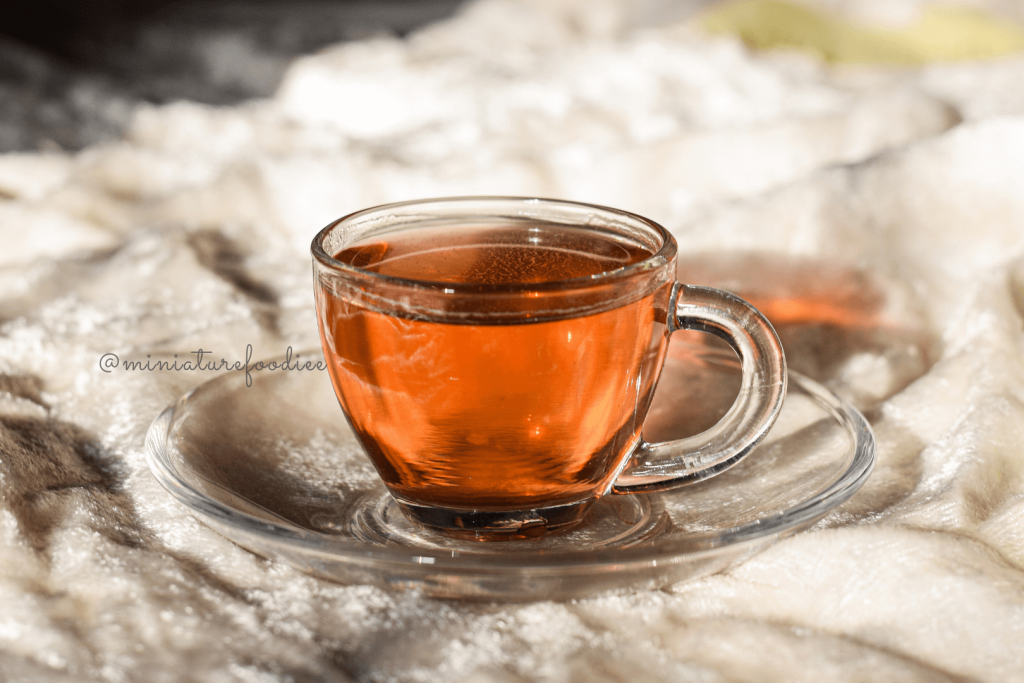Hojicha is a Japanese Tea. It originated in Kyoto about 100 years ago. Hojicha is a roasted green tea. The name Hojicha is made up of two different words. One being Hojiru meaning to roast and cha means tea.
Like traditional green teas, even hojicha is roasted after the leaves are steamed. Hojicha was traditionally made of Bancha. Bancha is harvested from the second flush of sencha between summer and autumn. But Hojicha is now even made with Sencha, Kukicha – tea made from stems, and even Gyokuro.

Hojicha contains very little caffeine and often drink in the evening. It is even safe to be given to the children. It is also known as the perfect alternative to coffee.
How IS HOJICHA PROCESSED
- Tea Plantation – Tea is grown in open fields without shade exposing to direct sunlight. Upper shoots of the tea plant are used for sencha, and the lower leaves are used for bancha.
- Harvesting – The first day of spring marks the day of the first tea picking. The leaves used for sencha and bancha are harvested together. The leaves would later be sorted according to their size, shape, and tightness of twist, and subsequently classified as either sencha or bancha.
- Steaming – Japanese green tea leaves are steamed after being harvested. The steaming process lasts for about 15 – 20 seconds and is performed within 12 – 20 hours after the leaves are picked. Steaming prevents the leaves from being oxidized. The tea leaves are later roasted, which changes the color and fragrance.
- Rolling/Drying – The rolling or drying process begins after the steaming. During this, the fibers are softened that helps the tea’s flavor components to release. This process prevents the quality of the leaves from changing, thereby maintaining the original character of the tea as much as possible.
- Roasting – Post Rolling/Drying, the buds, flakes, fine stems, and tightly twisted leaves are sorted and kept aside for sencha, while the coarse leaves and larger stems are used for bancha. The tea leaves are roasted at high heat over charcoal, during which the leaves take on a reddish-brown hue and get a rich fragrance. This also adds reduces the caffeine content in tea.
HEALTH BENEFITS OF HOJICHA
- Hojicha provides a sense of relaxation, aiding in both physical and mental health.
- Vitamin C content in Hojicha helps to keep your skin look clear and youthful.
- Hojicha is known to be an immunity-boosting tea becuase of its antibacterial properties and vitamins like A, C & E
- It helps aid cavities and bad breath.
- Lowers risk of cancer and heart disease.

HOW TO BREW A PERFECT CUP OF HOJICHA
Brewing Hojicha is quite easy. To brew a cup of tea, measure 4 grams of hojicha, and place it in the cup. Pour 120ml of boiling water (90-degrees temperature) over it, close the lid and allow it to steep for 30 seconds. Strain and sip! Hojicha tea leaves can be used up to two infusions
FLAVOR AND FRAGRANCE
It has a smoky and roasted aroma. It tastes rich, sweet and has notes of caramel and chocolate because of the roasting process.
Difference Between Hojicha and Matcha
Though Hojicha & Match are Japanese green teas, there are many differences between the two.
- Color of the tea – Hojicha has a dark reddish-brown color. The color of hojicha varies depending on the harvest time, the roasting time, and whether it is made from Sencha, Bancha, or Kukicha. Matcha is bright green in color. The lower the grade, the less vibrant the color of matcha powder becomes.
- Aroma – Fresh matcha has a vegetal aroma whereas hojicha has a soothing, almost therapeutic earthy, and smoky aroma.
- Flavor – The taste of matcha powder depends upon the grade of it. The lower-grade matcha tastes bitter, whereas the ceremonial-grade matcha is slightly sweet. Hojicha has a naturally sweet taste and smoky flavor with distinct notes of chocolate.
- Caffeine content – Matcha has approximately 70 mg of caffeine per cup, almost as much as coffee, making it perfect for early mornings. Hojicha has only about 7.7 mg of caffeine per cup, so it can be enjoyed later in the day.
If you try these teas, do send me a photo of it via Email or you can tag me on Instagram, Facebook, Twitter at @miniaturefoodiee
To read more such recommendations, click here.
Very well written ❤💯